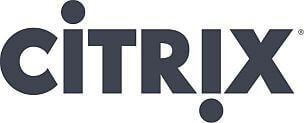XenApp and XenDesktop 7.15 LTSR released

The Long Term Service Release (LTSR) program for XenApp and XenDesktop provides stability and long-term support for the XenApp/XenDesktop 7.15 release.
If you are new to the LTSR program and did not deploy the original XenApp/XenDesktop 7.6 LTSR release, there is no need for you to install it now. Instead, Citrix recommends that you bypass the 7.6 LTSR release and begin right with 7.15 LTSR.
XenApp and XenDesktop 7.15 LTSR is essentially a field-proven, hardened version of XenApp and XenDesktop 2017 releases, with a variety of fixes and updates based on internal testing and customer feedback. It also includes broad OS platform support from Server 2008R2 to 2016 and Windows 7 to 10. Unlike the first LTSR, which was retroactively declared, this LTSR and future LTSRs will use a dedicated version number and LTSR designation. This makes it easier to identify LTSR sites over time. However, this LTSR should be adopted by all customers including those of you who are on the Current Release path given that this 7.15 LTSR contains fixes and updates for the 7.14 CR as well.
In addition, Citrix also recommends specific versions of Citrix Receiver and other components. While not required for LTSR compliance, upgrading to the current versions of those components ensures further ease of maintenance and the availability of the latest fixes in your deployment.
The product release also includes the following new, modified, and enhanced features since XenApp and XenDesktop 7.14.1:
VDA installation on machines without Microsoft Media Foundation
Most supported Windows editions come with Microsoft Media Foundation already installed. If the machine on which you’re installing a VDA does not have Media Foundation (such as N editions), several multimedia features will not be installed and will not work. You can acknowledge the limitation, or end the VDA installation and restart it later, after installing Media Foundation. In the graphical interface, this choice is offered in a message. In the command line, you can use the /no_mediafoundation_ack option to acknowledge the limitation.
Upgrading a XenApp 6.5 worker to a new VDA
After migrating a XenApp 6.5 farm, you can upgrade a XenApp 6.5 worker to a new VDA. Previously, running the XenApp and XenDesktop installer on the worker server automatically removed the XenApp 6.5 software and then installed the new VDA. Now, you first remove HRP7 and the XenApp 6.5 software from the server., using separate processes. Then, you install the new VDA. For details, see Upgrade a XenApp 6.5 worker to a new VDA.
MCS supports generation 2 VMs
When using Microsoft System Center Virtual Machine Manager to provide VMs, you can now use Machine Creation Services (MCS) to provision generation 2 VMs.
Local Host Cache
During a new installation of XenApp and XenDesktop, Local Host Cache is enabled by default. Connection leasing is disabled by default.
After an upgrade, the Local Host Cache setting is unchanged. For example, if Local Host Cache was enabled in the earlier version, it remains enabled in the upgraded version. If Local Host Cache was disabled (or not supported) in the earlier version, it remains disabled in the upgraded version.
Director
Application Failure monitoring. Director extends the Trends view with the Application Failures tab to display historical failures associated with published applications. You can see faults and errors that have occurred while launching or running of a selected application or process during a selected time period. This information enables you to comprehend and troubleshoot application-specific issues. For more information, see Historical application failure monitoringin Troubleshoot applications.
By default, failures of applications hosted on Server OS VDAs are monitored. You can modify the monitoring settings through the Monitoring Group Policies: Enable monitoring of application failures, Enable monitoring of application failures on Desktop OS VDAs, and List of applications excluded from failure monitoring. For more information, see Policies for application failure monitoring in Monitoring policy settings.
This feature requires Delivery Controller(s) and VDAs version 7.15 or later. Desktop OS VDAs of Windows Vista or later, and Server OS VDAs of Windows Server 2008 or later are supported.
Virtual Delivery Agents (VDAs) 7.15
After upgrading your VDAs from version 7.9, 7.11, 7.12, 7.13, or 7.14 you do not need to update the machine catalog’s functional level. The default (7.9 (or newer …)) remains the current functional level. For information, see VDA versions and functional levels.
New deployments
How do I deploy 7.15 LTSR from scratch?
You can set up a brand-new XenApp or XenDesktop environment using the 7.15 LTSR metainstaller.* Before you do that, we recommend that you familiarize yourself with the product:
Read the XenApp and XenDesktop 7.15 Long Term Service Release documentation and pay close attention to the Technical overview, Install and configure, and Secure sections before you start planning your deployment. Make sure your setup meets the system requirements for all components. Follow Install and configure for deployment instructions.
* Note: Provisioning Services and Session Recording are available as separate downloads and installers.
Existing deployments
What do I update?
XenApp and XenDesktop 7.15 LTSR provides updates to all baseline components of 7.6 LTSR. Remember: Citrix recommends that you update all LTSR components of your deployment to 7.15 LTSR. For example: If Provisioning Services is part of your LTSR deployment, update the Provisioning Services component. If Provisioning Services is not part of your deployment, you do not need to install or update it.
Since the original 7.6 LTSR release, we have added a metainstaller that lets you update the existing components of your LTSR environment from a unified interface. Following the Upgradeinstructions, use the metainstaller to update the LTSR components of your deployment.
XenApp and XenDesktop 7.15 LTSR baseline components
| 7.15 LTSR Baseline Component | Version | Notes |
|---|---|---|
|
VDA for Desktop OS |
7.15 |
|
|
VDA for Server OS |
7.15 |
|
|
Delivery Controller |
7.15 |
|
|
Citrix Studio |
7.15 |
|
|
Citrix Director |
7.15 |
|
|
Group Policy Management Experience |
3.12 |
|
|
StoreFront |
3.12 |
|
|
Provisioning Services |
7.15 |
|
|
Universal Print Server |
7.15 |
Only Windows 2008 R2 SP1, Windows 2012, and Windows 2012 R2 supported |
|
Session Recording |
7.15 |
Platinum Edition only |
|
Linux VDA |
7.15 |
See the Linux VDA documentation for supported platforms |
|
Profile Management |
7.15 |
|
XenApp and XenDesktop 7.15 LTSR compatible components
The following components are recommended for use in 7.15 LTSR environments. These components are not eligible for the LTSR benefits (extended lifecycle and fix-only cumulative updates). Citrix might ask you to upgrade to a newer version of these components within your 7.15 LTSR environments.
| 7.15 LTSR Compatible Components and Platforms | Version |
|---|---|
|
AppDNA |
7.15 |
|
Citrix SCOM Management Pack for License Server |
1.2 |
|
Citrix SCOM Management Pack for Provisioning Services |
1.19 |
|
Citrix SCOM Management Pack for StoreFront |
1.12 |
|
Citrix SCOM Management Pack for XenApp and XenDesktop |
3.13 |
|
HDX RealTime Optimization Pack |
2.2.100 |
|
License Server |
11.14.0 Build 21103 |
|
Workspace Environment Management |
4.3 |
|
App Layering |
4.3 |
Compatible versions of Citrix Receiver
For ease of maintenance, and to ensure optimal performance, Citrix recommends that you upgrade to the latest version of Citrix Receiver any time it becomes available. The latest versions are available for download at https://www.citrix.com/downloads/citrix-receiver.html. For your convenience, consider subscribing to the Citrix Receiver RSS feed to receive a notification when a new version of Citrix Receiver becomes available.
Note that Citrix Receiver is not eligible for the XenApp and XenDesktop LTSR benefits (extended lifecycle and fix-only cumulative updates). Citrix may ask you to upgrade to a newer version of Citrix Receiver within your 7.15 LSTR environments. In the case of Citrix Receiver for Windows, Citrix has announced a special LTSR program. More information on that program is available on the Lifecycle Milestones for Citrix Receiver page.
Specifically, 7.15 LTSR supports the following versions of Citrix Receiver and all later versions.
| LTSR Compatible Version of Citrix Receiver | Version |
|---|---|
|
4.9 or later |
|
|
13.5 or later |
|
|
12.5 or later |
|
|
2.4 or later |
|
|
2.4 or later |
|
|
7.2 or later |
|
|
3.11.1 or later |
|
XenApp and XenDesktop 7.15 LTSR notable exclusions
The following features, components, and platforms are not eligible for 7.15 LTSR lifecycle milestones and benefits. Specifically, cumulative updates and extended lifecycle benefits are excluded. Updates to excluded features and components will be available through regular current releases.
| Excluded Features |
|---|
|
Framehawk |
|
StoreFront Citrix Online Integration |
| Excluded Components |
|---|
|
Personal vDisk |
|
AppDisks |
| Excluded Windows Platforms * |
|---|
|
Windows 2008 32-bit (for Universal Print Server) |
* Citrix reserves the right to update platform support based on third-party vendors’ lifecycle milestones.
Install and upgrade analytics
When you use the full-product installer to deploy or upgrade XenApp or XenDesktop components, anonymous information about the installation process is gathered and stored on the machine where you are installing/upgrading the component. This data is used to help Citrix improve its customers’ installation experiences. For more information, see https://more.citrix.com/XD-INSTALLER.
XenApp 6.5 migration
The XenApp 6.5 migration process helps you more efficiently and quickly transition from a XenApp 6.5 farm to a Site running XenApp 7.15 LTSR (or a later supported release). This is helpful in deployments that contain large numbers of applications and Citrix group policies, lowering the risk of inadvertently introducing errors when manually moving applications and Citrix group policies to the new XenApp Site.
After you install the XenApp 7.15 LTSR core components and create a Site, the migration process follows this sequence:
- Run the XenApp 7.15 installer on each XenApp 6.5 worker, which automatically upgrades it to a new Virtual Delivery Agent for Server OS for use in the new Site.
- Run PowerShell export cmdlets on a XenApp 6.5 controller, which exports application and Citrix policy settings to XML files.
- Edit the XML files, if desired, to refine what you want to import to the new Site. By tailoring the files, you can import policy and application settings into your XenApp 7.15 LTSR Site in stages: some now and others later.
- Run PowerShell import cmdlets on the new XenApp 7.15 Controller, which import settings from the XML files to the new XenApp Site.
Reconfigure the new Site as needed, and then test it.
For more information, see Migrate XenApp 6.x.
You can also use Citrix Smart Tools to migrate a XenApp 6.x deployment. For details, see Smart Migrate
